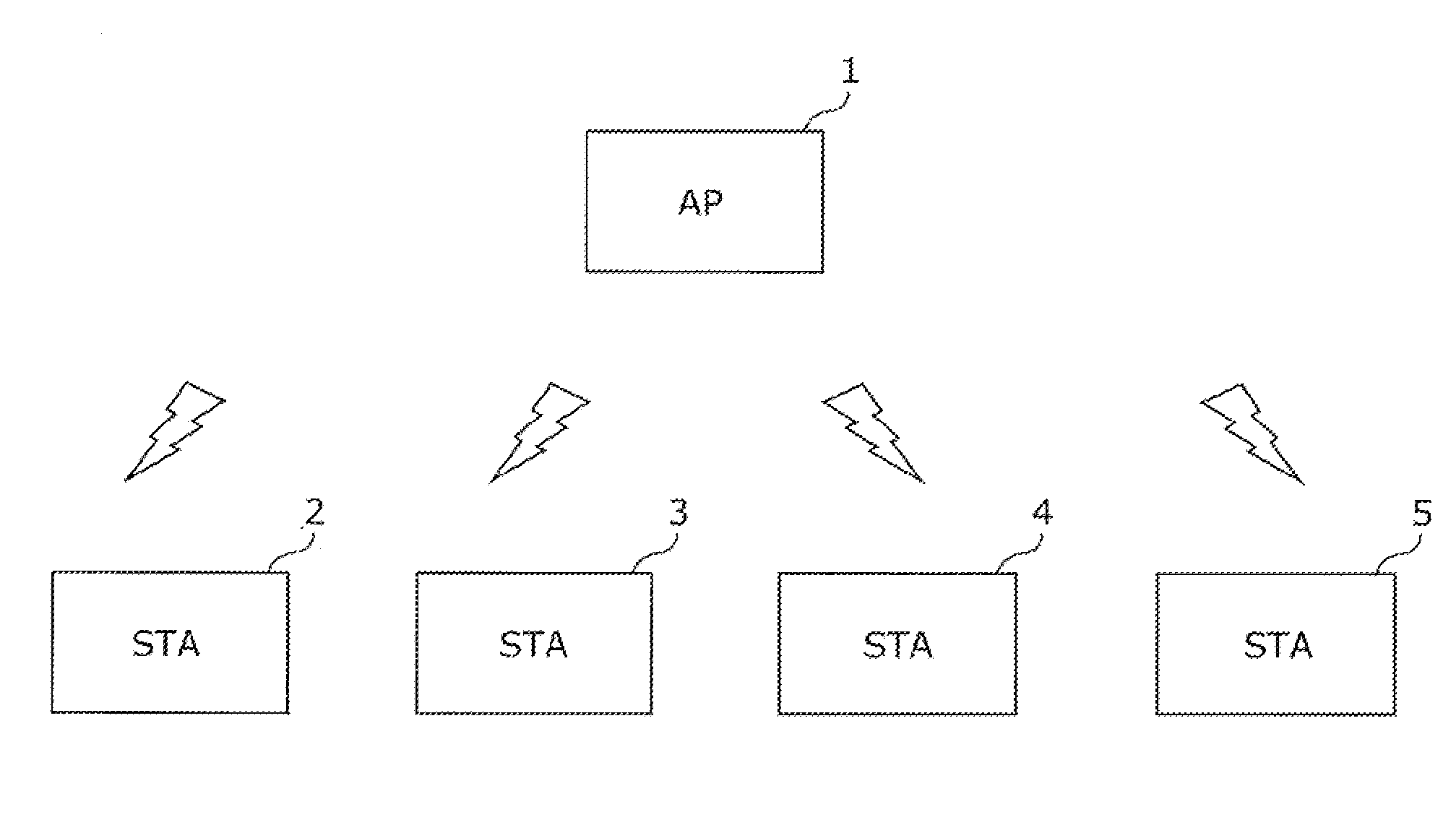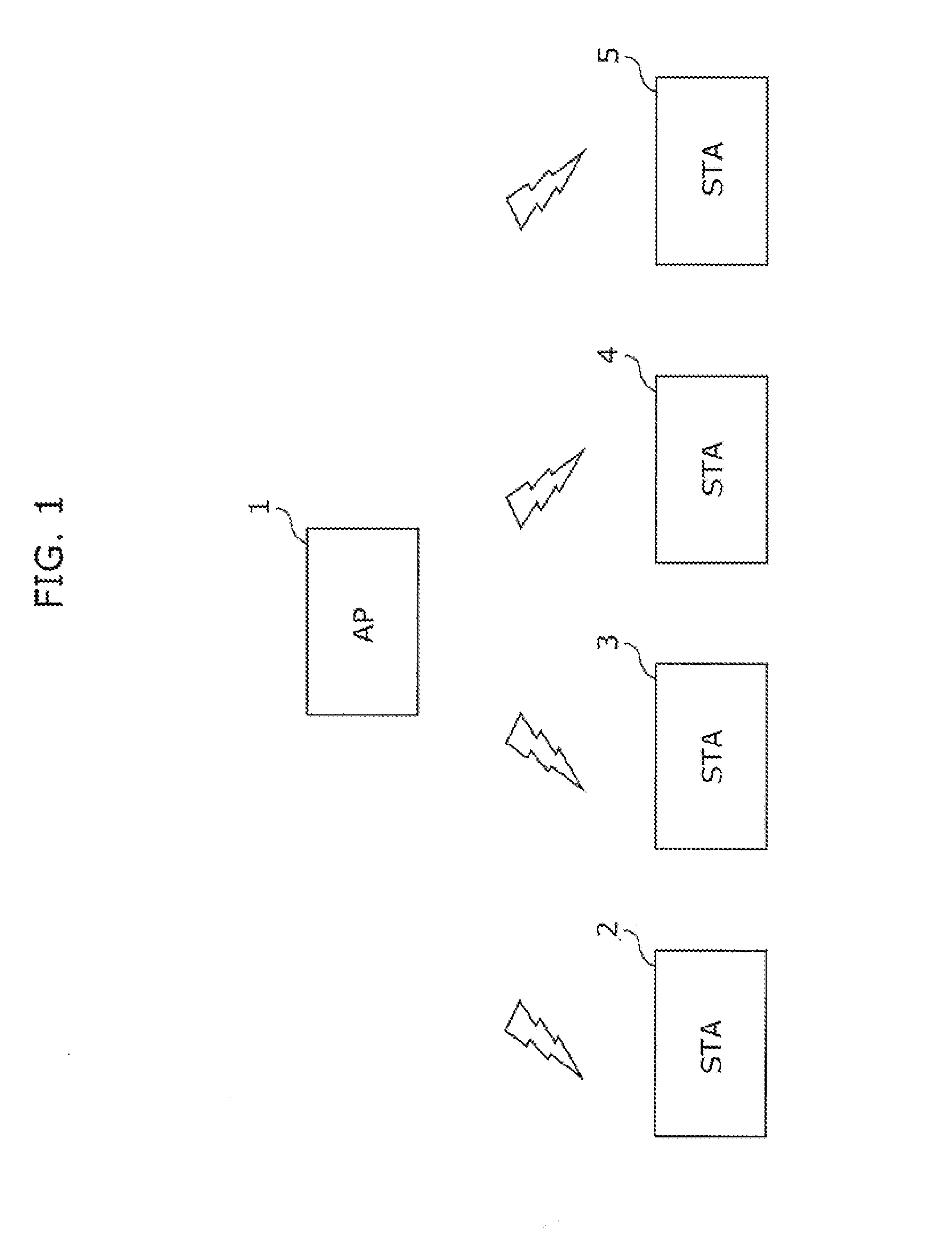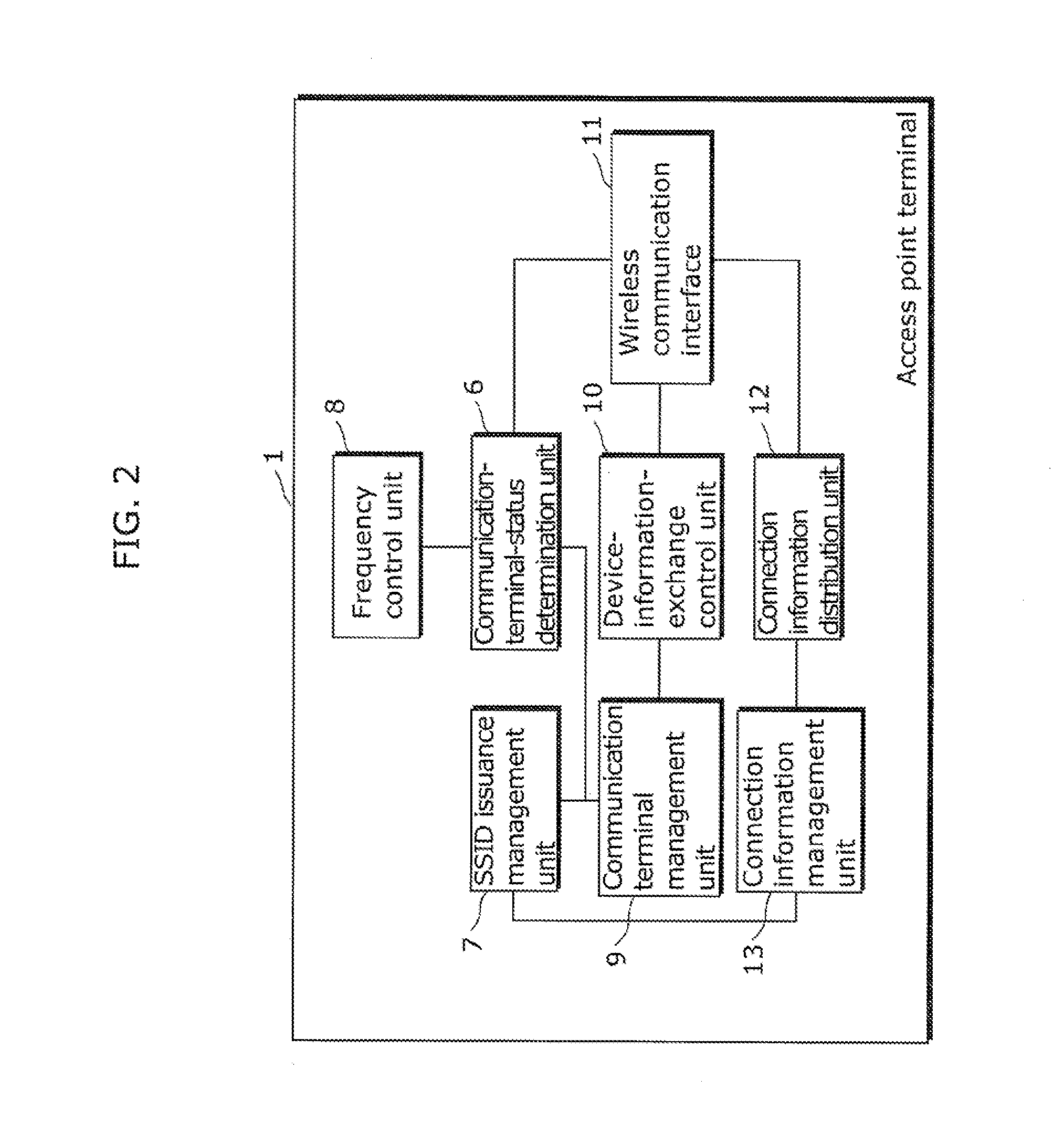Access point terminal, wireless communication terminal, wireless communication system, wireless communication method, program and integrated circuit
a wireless communication terminal and access point technology, applied in the field of information processing techniques, can solve the problems of user inability to execute a service smoothly, radio wave interference frequently occurring, and overflowing of the 5 ghz band, and achieve the effect of less radio wave interference and high real-timeliness in wireless communication
- Summary
- Abstract
- Description
- Claims
- Application Information
AI Technical Summary
Benefits of technology
Problems solved by technology
Method used
Image
Examples
first embodiment
[0063]First, a configuration diagram of a wireless LAN system according to a first embodiment is described. The wireless LAN system according to the first embodiment includes an access point terminal 1 (hereinafter referred to as AP) and wireless communication terminals 2 to 5 (hereinafter referred to as STA). The STA2 to the STA5 are connected using an infrastructure mode and communicate under a control of the AP1. The number of the STAs is 4 in the first embodiment, however, it goes without saying that it is not limited to the number.
[0064]Furthermore, the STA2 to the STA5 are connected with the AP1 using Wi-Fi Protected Setup (WPS), which is an easy setup for wireless LAN advocated by Wi-Fi Alliance (WFA). It goes without saying that, without being limited to WPS, other easy connections for wireless LAN may be used, such as the easy connection which (i) enables an automatic key exchange between the AP1 and each of the STA2 to the STA5, and (ii) allows the AP1 to distribute connec...
second embodiment
[0149]Next, the second embodiment is described. The difference between the first embodiment and the second embodiment is in the way the AP1 assigns the SSID. Specifically, it is different that, in the first embodiment, the SSID issuance control unit 7 assigns the unique SSID to each of the STA2 to the STA5, while, in the second embodiment, the SSID issuance control unit 7 assigns a unique SSID to each of the categories to which each of the STA2 to the STA5 belongs. The description on commonalities with the first embodiment is omitted in the description below to focus on differences.
[0150]The AP1 starts the WPS and so forth with the STA2 (S101), and obtains the device information of the STA2 (S102), in the same manner as the first embodiment. The device information includes, for example, the uuid, the Primary Device Type, or the Category which are assigned uniquely to each of the STA2 to the STA5.
[0151]For example, as examples of the Primary Device Type, “Television”, “PVR”, and “PC”...
third embodiment
[0169]The difference between the third embodiment and the first embodiment is in a specific procedure of determining whether or not the STA2, the STA3 and the STA5 has executed the application requiring real-timeliness. Specifically, it is different that the communication-terminal-status determination unit 6 determines, in the first embodiment, based on whether or not the volume of the wireless communication is greater than the threshold, while, in the second embodiment, based on whether or not priority of communication data is greater than the threshold. It is to be noted that to perform communication with priority of communication data greater than the threshold is an example of the communication status to satisfy the predetermined condition. The description on commonalities with the first embodiment is omitted in the description below to focus on differences.
[0170]In the third embodiment, a specific process is described in detail, where the process is for determining, by the comm...
PUM
 Login to View More
Login to View More Abstract
Description
Claims
Application Information
 Login to View More
Login to View More - R&D
- Intellectual Property
- Life Sciences
- Materials
- Tech Scout
- Unparalleled Data Quality
- Higher Quality Content
- 60% Fewer Hallucinations
Browse by: Latest US Patents, China's latest patents, Technical Efficacy Thesaurus, Application Domain, Technology Topic, Popular Technical Reports.
© 2025 PatSnap. All rights reserved.Legal|Privacy policy|Modern Slavery Act Transparency Statement|Sitemap|About US| Contact US: help@patsnap.com



